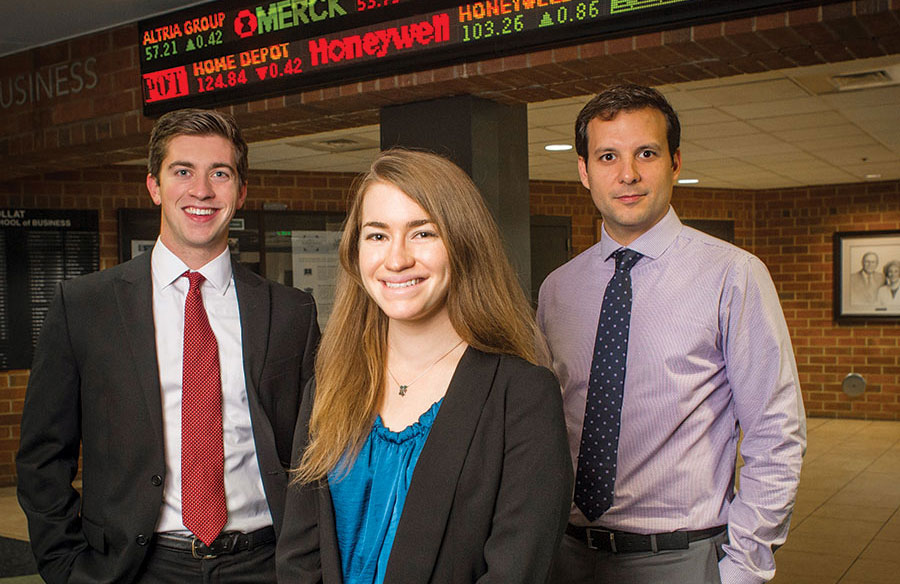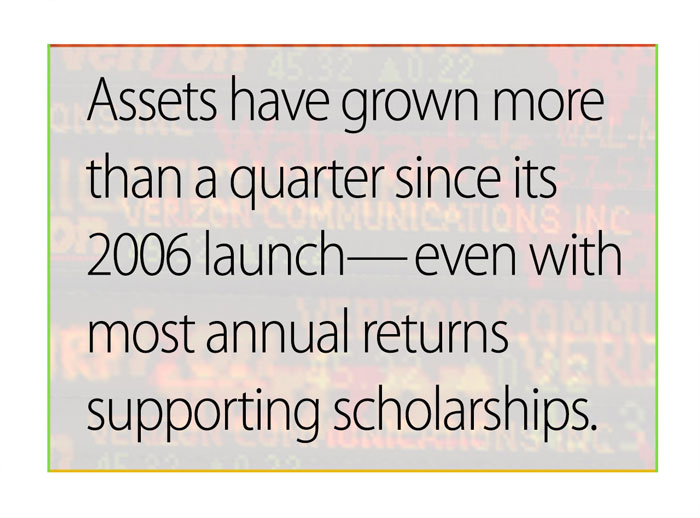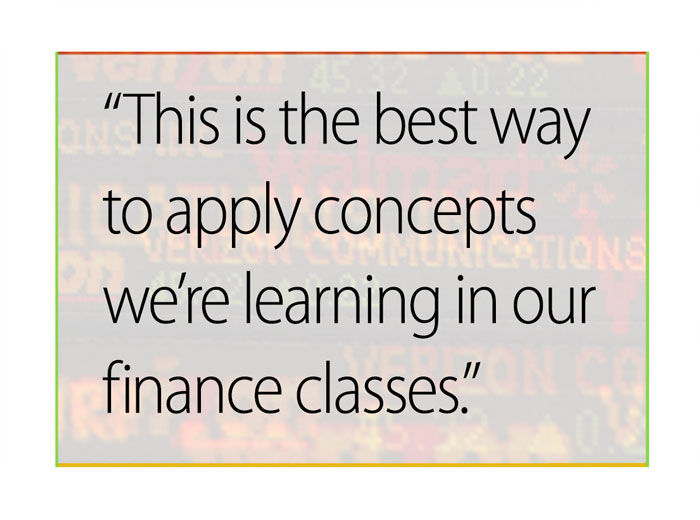 From left: Recent members of the Green and Gold Fund include chief economist Matthew Bush and portfolio managers Margot Beerman and Daniel Sanabria.Most business schools want their finance students to gain real-world experience. Not many give them half a million to do it.
From left: Recent members of the Green and Gold Fund include chief economist Matthew Bush and portfolio managers Margot Beerman and Daniel Sanabria.Most business schools want their finance students to gain real-world experience. Not many give them half a million to do it.
Five hundred and twenty-five thousand dollars, to be specific, is what students manage in UAB’s Green and Gold Fund investment portfolio. “It’s not Monopoly money or Yahoo Finance,” says Andreas Rauterkus, Ph.D., the fund’s faculty adviser and associate professor of accounting and finance in the Collat School of Business. “These are actual dollars, and quite a few of them.”
While Rauterkus provides technical expertise, the investments are entirely up to the fund’s student managers, and they have delivered: The Green and Gold Fund is a three-time champion of the RISE national collegiate portfolio competition, and its assets have grown by more than a quarter since its 2006 launch—even with most of its annual returns supporting scholarships for accounting and finance students.

Researching the risk
Yet not all fund members aspire to Wall Street. Finance major Margot Beerman, portfolio manager for the health care sector, plans to go to dental school after she graduates this year. She has been interested in stocks since high school and enjoys learning how the economics of the health care industry affects people. “It surprised me how much information is out there and how complicated it is,” she says. “I had to look up terms every day just to know what I was looking at.”
The student investors work in a space containing nearly a dozen dual-screened Bloomberg Terminals, the state-of-the-art (and notoriously complex) research tools seen in the trading rooms of billion-dollar firms. Beerman and her team of five analysts use them to follow health care companies like doctors monitoring patients in an ICU—only using terms such as “P/E Ratio” and “free cash flow” in place of medical jargon.
They spent dozens of hours of their own time digging into one recent candidate, a company that buys and renovates hospice care centers, scrutinizing the company’s financials as well as qualitative elements like history and board members. “It’s essentially like taking another class,” Beerman says. The analysts “are strong-willed, high-performing students who strive to learn.”
Fund leadership includes a chief investment officer (CIO), chief economic officer, plus portfolio managers for six different sectors as well as alternatives and fixed-income, and they all vote on proposed investments at weekly meetings. Rauterkus never weighs in with his own opinion, though students can’t simply put money into anything they want. The fund adheres to a strict investment policy that limits the level and kind of investments. Otherwise the students would take more risk, Rauterkus says. “They want to see their stock return 20, 30, 40 percent because that’s exciting to them.”
The investment policy was designed for a portfolio to fund scholarships in the long term, not big gambles. Every investment fund has limitations, Rauterkus explains, and since Green and Gold uses actual money, mismanaging it can have real-world consequences.
Yet students can and sometimes do change the playing field. Though it is uncommon, they could appeal to the fund’s original sponsors to alter the investment policy. Members also take active roles in the companies the fund invests in, attending shareholder meetings by proxy and even casting votes. One former portfolio manager developed a spreadsheet model for optimized risk allocations that still influences the way the students invest.

New markets, new opportunities
“Each analyst can get out of it as much as they put in,” says Daniel Sanabria, portfolio manager for alternative investments. He first came to UAB from Madrid, Spain, in 2002 and returned a decade later to earn his M.B.A.; he graduated last December. “This is the best way to apply concepts we’re learning in our finance classes.”
Sanabria knows what he is talking about when it comes to professional investing. He spent the last five years trading for a local hedge fund. After joining Green and Gold, he led a UAB team to a second-place finish out of more than 500 contestants in an international student portfolio contest.
The experience recently inspired Sanabria to start his own investment fund, which has raised around $750,000 so far. He has focused on commodities trading outside of school, he says, and the student fund has helped him to experience new markets and types of investment vehicles. “It has also provided me with incredible exposure,” he adds.
Green and Gold’s success also led former fund CIO Marian Rough to a career after her 2014 graduation. She now travels the country advising banks on behalf of the federal government. Along with investment know-how, the fund “showed me how to manage others and show that others are valued,” she says. That came in handy when she had to convince a bank CFO to completely reconstruct an investment strategy, for example.
“I went from a student who didn’t know anything about finance to someone heavily involved in the banking industry,” she says. “It took me from nothing and made me into something.”